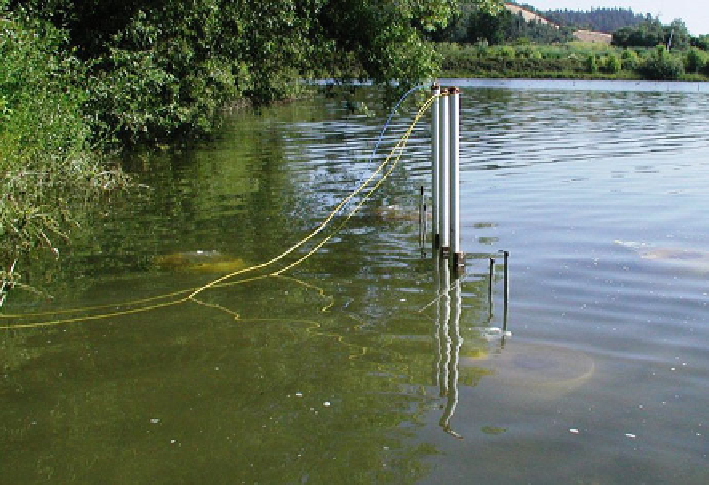Environmental Engineering Reference
In-Depth Information
Fig. 3.46 Nest of piezometers installed at different depths beneath the wetland bed with pressure
transducers and temperature sensors installed in five of the seven wells. All sensors are connected
to a digital datalogger positioned on shore to the left of the photo. Note also the four seepage
meters, with bags attached directly to the tops of the seepage cylinders, installed near the wells.
Attaching the bag directly to the seepage cylinder is sometimes acceptable where wind and
currents are minimal
for measuring temperature, along with the concepts presented in Sect.
3.6
,to
determine a value for
Q
at the piezometer we installed earlier. This value can be
compared to Q determined with the Darcy method described in Field activity 1.
Two basic types of electronic sensors are commonly deployed for this purpose.
The thermocouple is a device that consists of two wires made of different metals
that are connected together at both ends. A current is generated when two junctions
of these wires are exposed to different temperatures. Copper and constantan wires
are commonly paired for use in environmental applications. The method requires
that one of the junctions be related to a known temperature. Therefore, a separate
reference temperature sensor also is required to use this measurement method. The
second commonly used sensor, and one that often is used as the reference ther-
mometer for thermocouple installations, is the thermistor. A thermistor is basically
a resistor that changes resistance in response to changing temperature. The choice
of thermocouple or thermistor often depends on the number of temperature sensors
required. If more than 5-10 sensors are required, it may be more cost effective to
deploy thermocouples.
Two methods of deploying temperature sensors also commonly are used. One
consists of a sensor connected to wires that transmit the signal to a nearby data-
collection device (Fig.
3.46
), and the other consists of the sensor and datalogger in a

